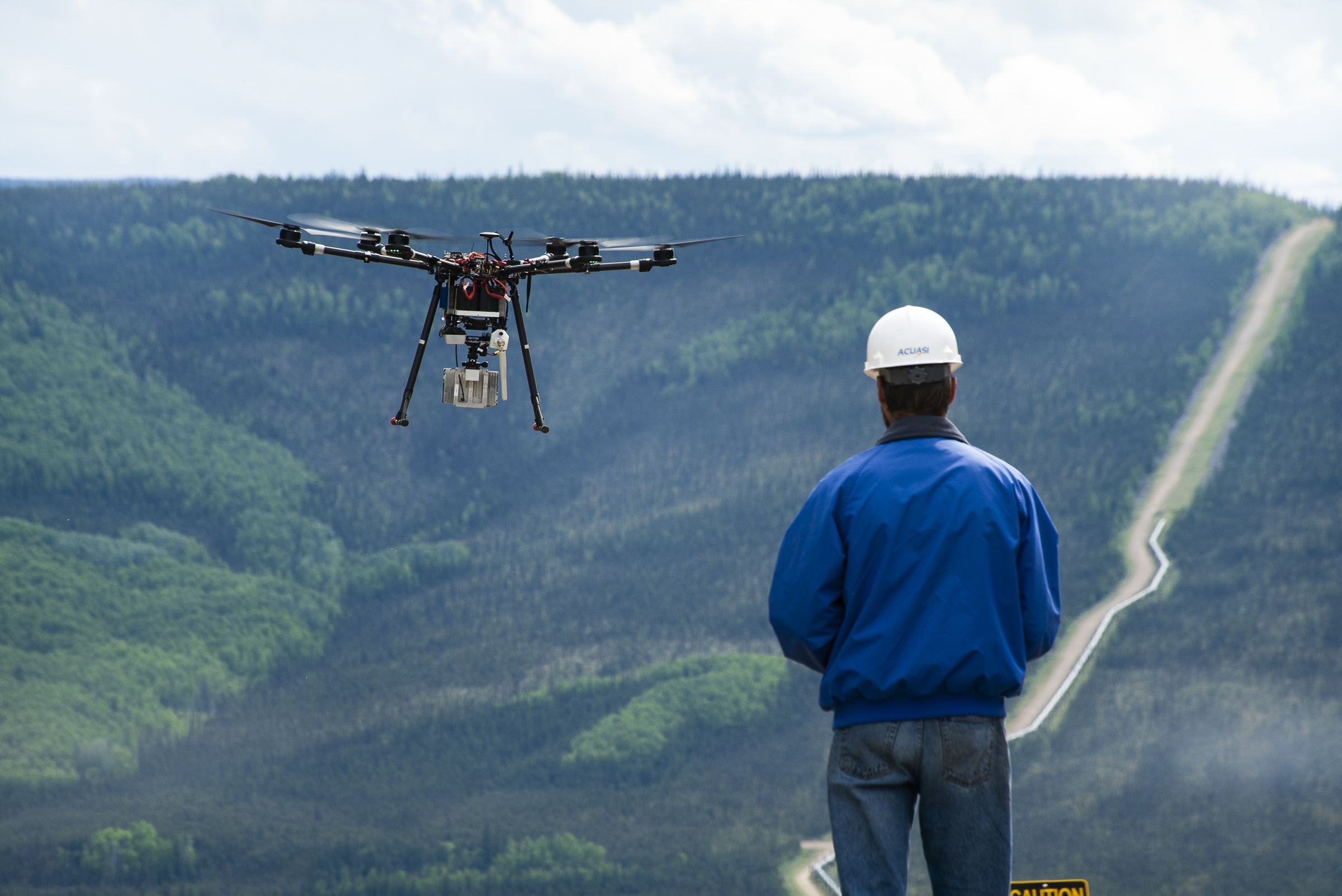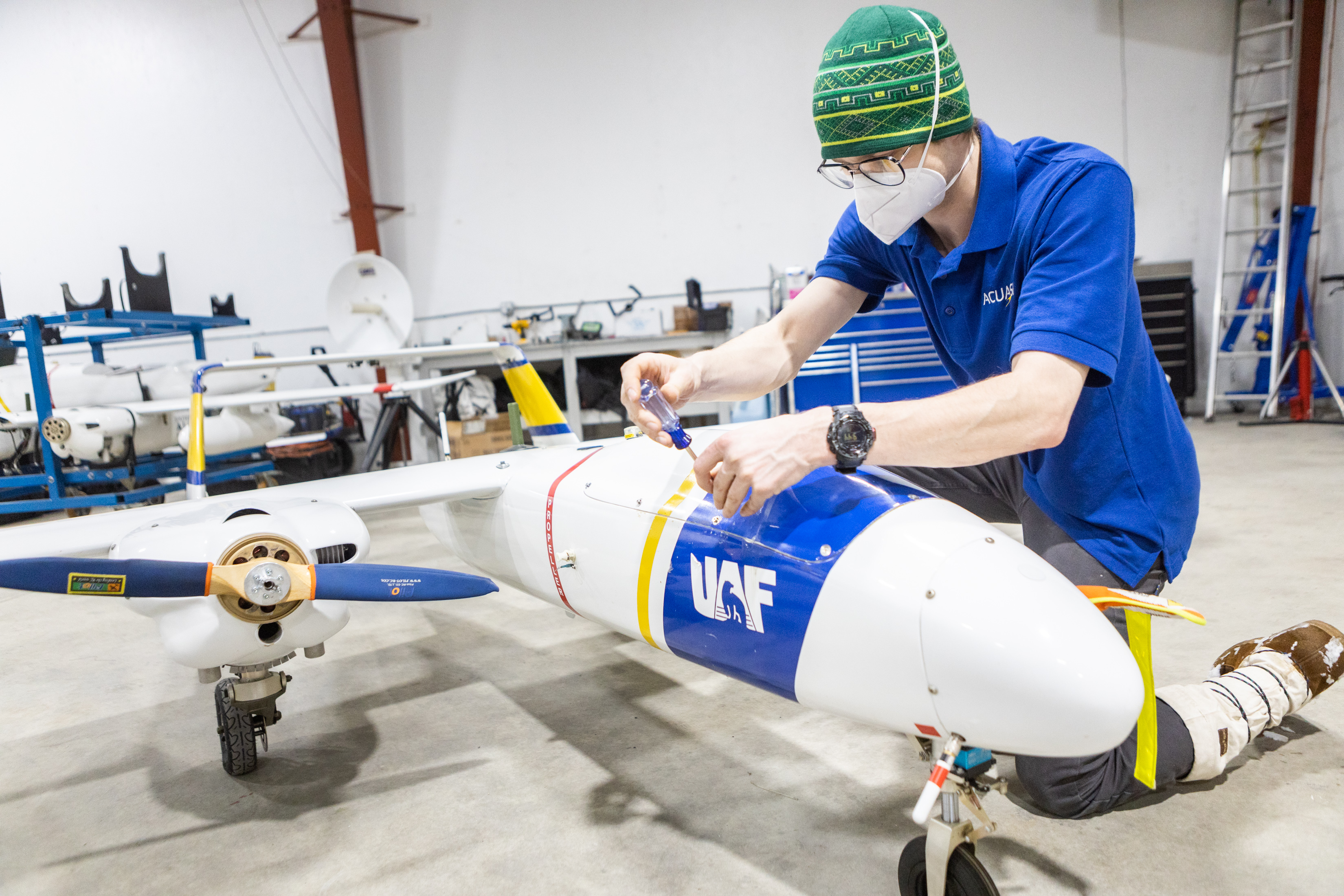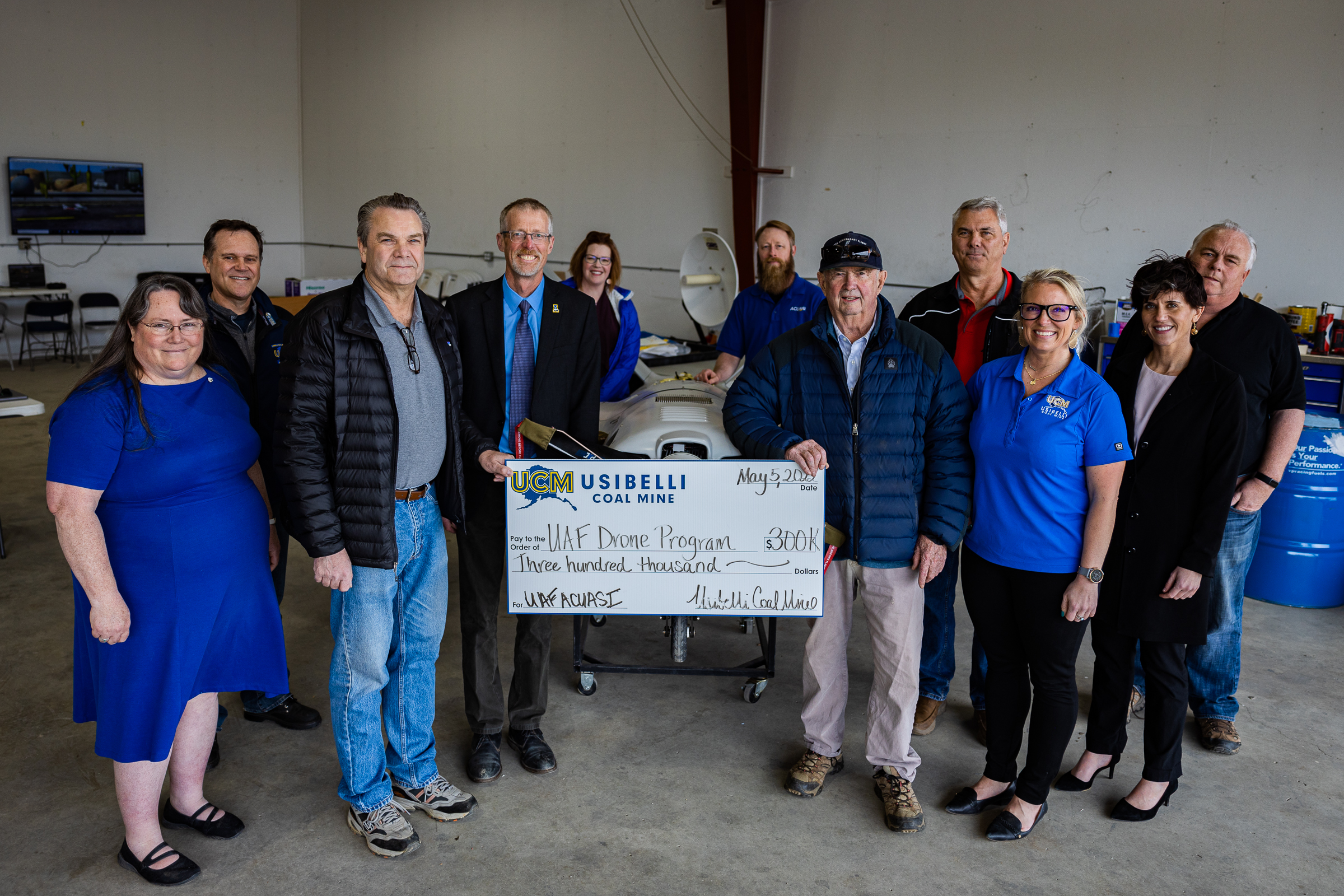Advancing research and innovation

ACUASI pilot Matthew Westhoff operates an unmanned aerial vehicle over the trans-Alaska oil pipeline June 9, 2021, near Olnes Pond. ACUASI partnered with Vigilant Aerospace Systems to test beyond-visual line-of-sight flights for work such as pipeline monitoring.
The University of Alaska Fairbanks focuses on actionable research, and Alaska's individuals and industries have noticed.
“Our real goal here is to help the people of Alaska,” said Cathy Cahill, director of UAF’s Alaska Center for Unmanned Aerial Systems Integration.
ACUASI, a world-class research center with a particular emphasis on Arctic and sub-Arctic regions, is one example of a UAF effort that has drawn significant outside interest and support. The center has drones, unmanned aircraft, tools and technology that provide pivotal data through such efforts as marine and land mammal surveys, atmospheric sampling and wildfire surveillance.

An ACUASI employee works on one of the UAF center’s unmanned aerial vehicles.
ACUASI weaves together research, fieldwork and technology. It serves as a critical resource for other university departments, government agencies and the private sector. An example is a 3D model of the Aialik Glacier created for the National Park Service with mapping information gathered by an ACUASI drone. The model contributes to the Kenai Fjords National Park’s glacier monitoring efforts and is displayed at the park’s visitors center.
Cahill noted that the center collaborates with the Federal Aviation Administration to improve flight safety by monitoring volcanoes and predicting where ash plumes will go. A new effort is underway with the FAA to allow unmanned aircraft to drop cargo such as medical supplies to remote communities. In January 2021, the FAA named Cahill one of 12 new members of its Drone Advisory Committee. The committee provides advice and recommendations for drones’ safe and effective integration in the national airspace system.
ACUASI’s innovative work has garnered the interest and philanthropy of numerous individuals and organizations.
Among the donors is UAF alumnus Richard “Dick” Reeve ’60. Dick’s father, Robert “Bob” Reeve, founded Reeve Aleutian Airways. Dick worked alongside his father in a variety of roles, including as a pilot, and then served as CEO of the company for many years.
Dick sees unmanned aircraft as “the future of aviation,” noting that ACUASI’s place as a leader in this cutting-edge technology is significant for Alaska.

Representatives of Usibelli Coal Mine and UAF tour the ACUASI hangar on the Fairbanks International Airport’s East Ramp on May 5, 2022.
Usibelli Coal Mine, a UAF benefactor of note for more than 40 years, also supports ACUASI. The mine’s operators, who already employ drones, realize that broadening their capability and use — particularly beyond the visual line of sight — has a tremendous potential return on investment for industries throughout Alaska.
The Usibelli family, known for its commitment to philanthropy and the betterment of Alaska, champions the center’s efforts to push innovation and research that helps the state and places beyond.
“We need to ensure a trained and skilled workforce is available to support the growing drone industry,” said Joe Usibelli Jr., president of Usibelli Coal Mine. “The Usibelli Coal Mine Drone Advancement Endowed Scholarship will support future leaders in unmanned aircraft systems technology in Alaska and will help shape the future of drone technology, infrastructure, manufacturing and operations in the state.”

ACUASI pilot Matthew Westhoff adjusts an unmanned aerial vehicle during testing near the trans-Alaska oil pipeline June 9, 2021.
